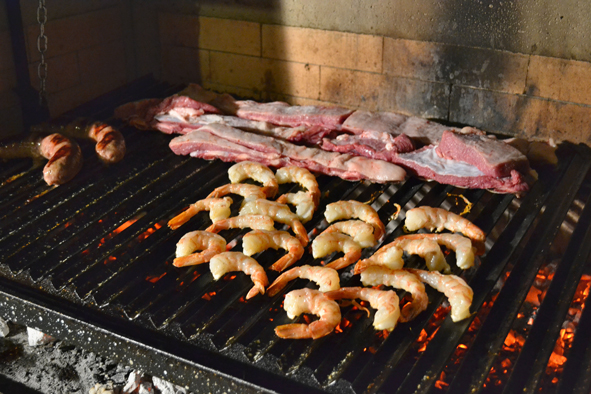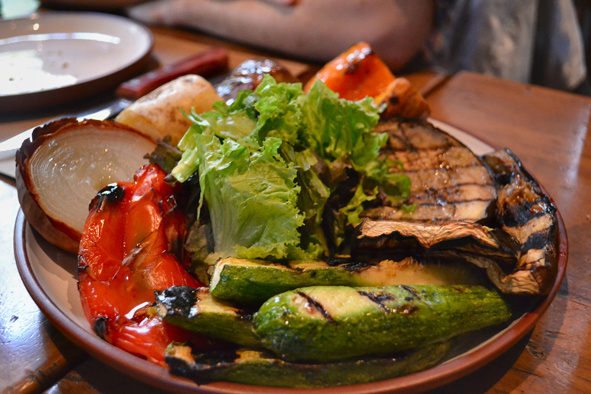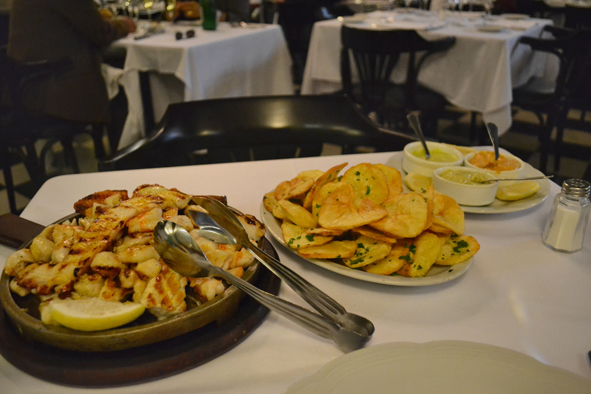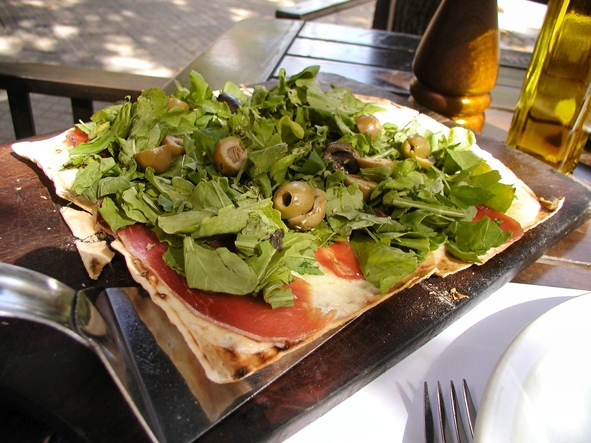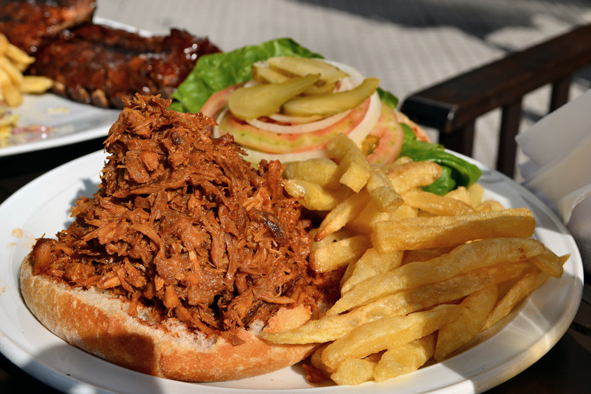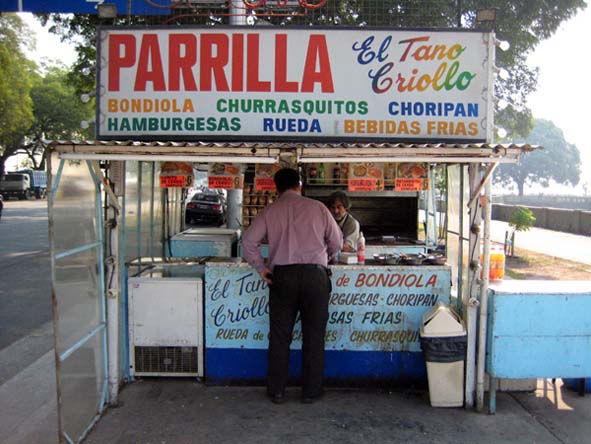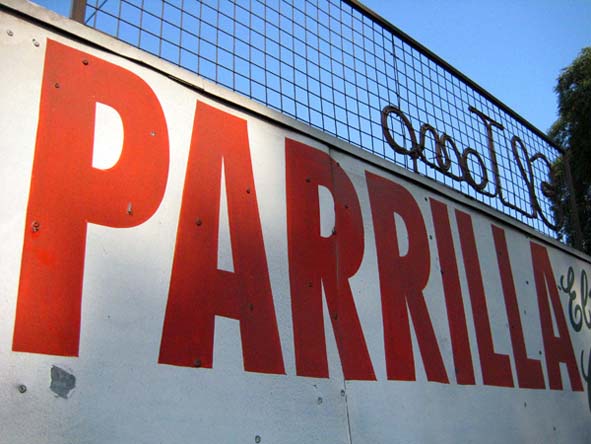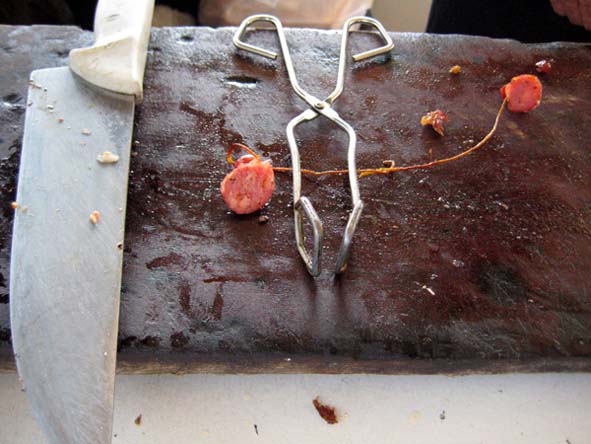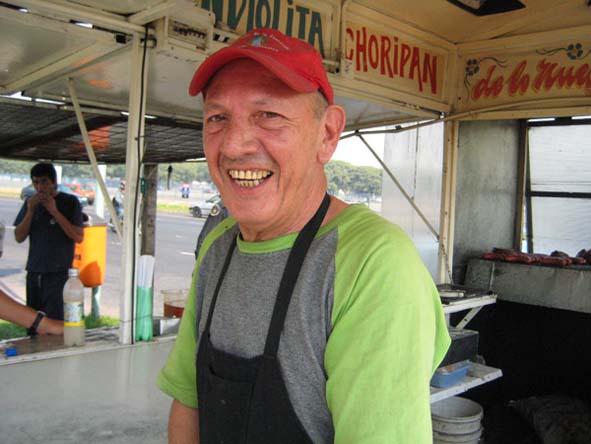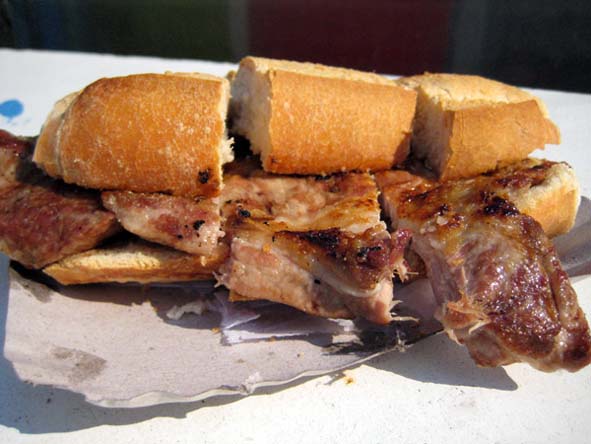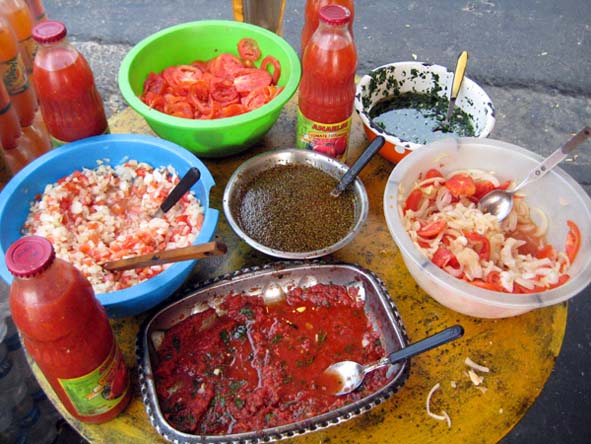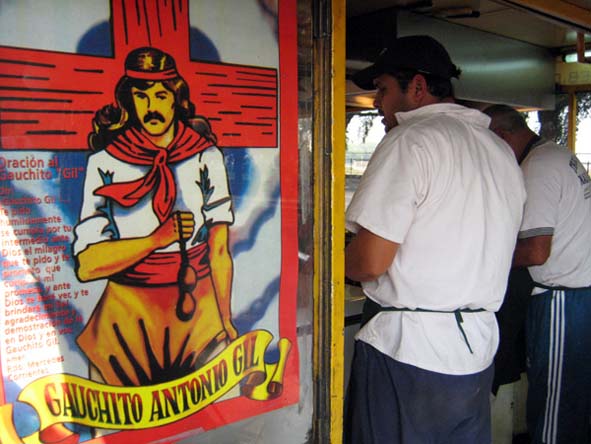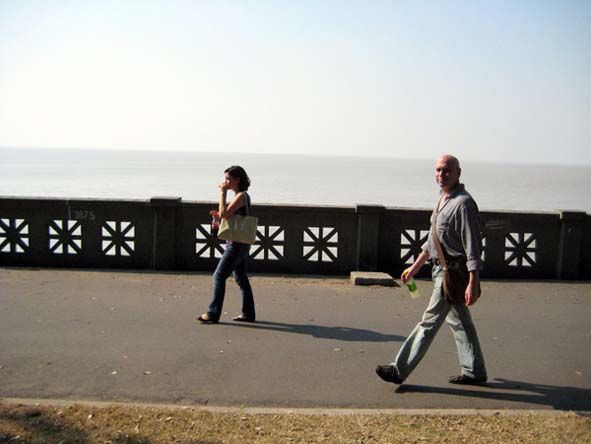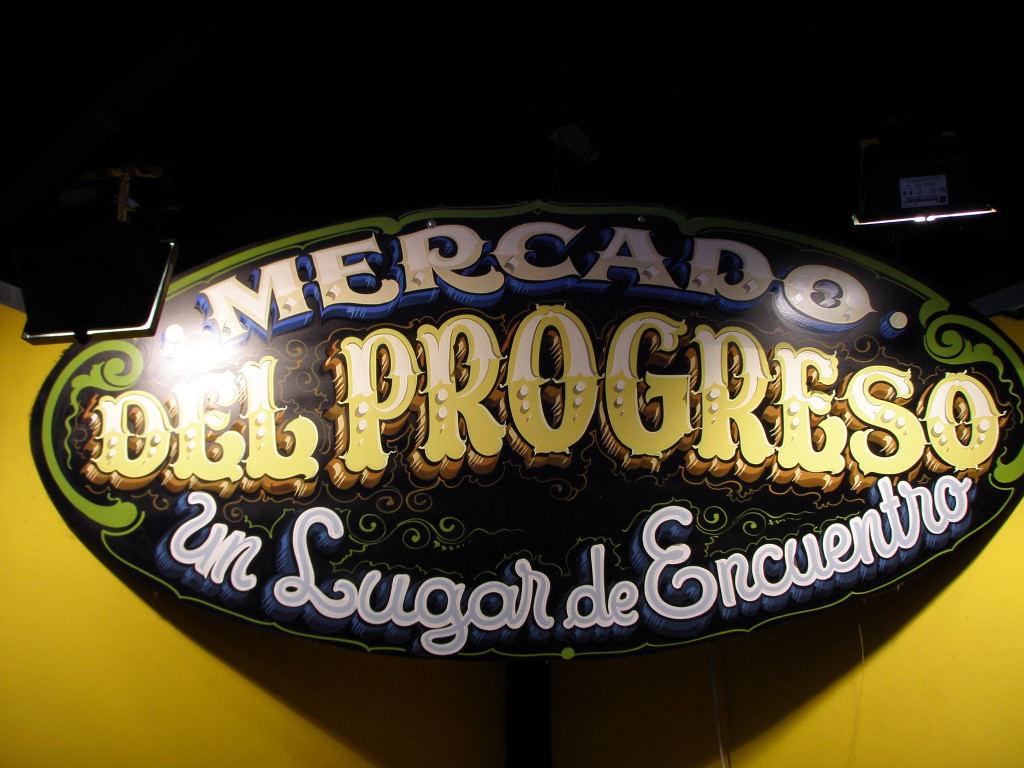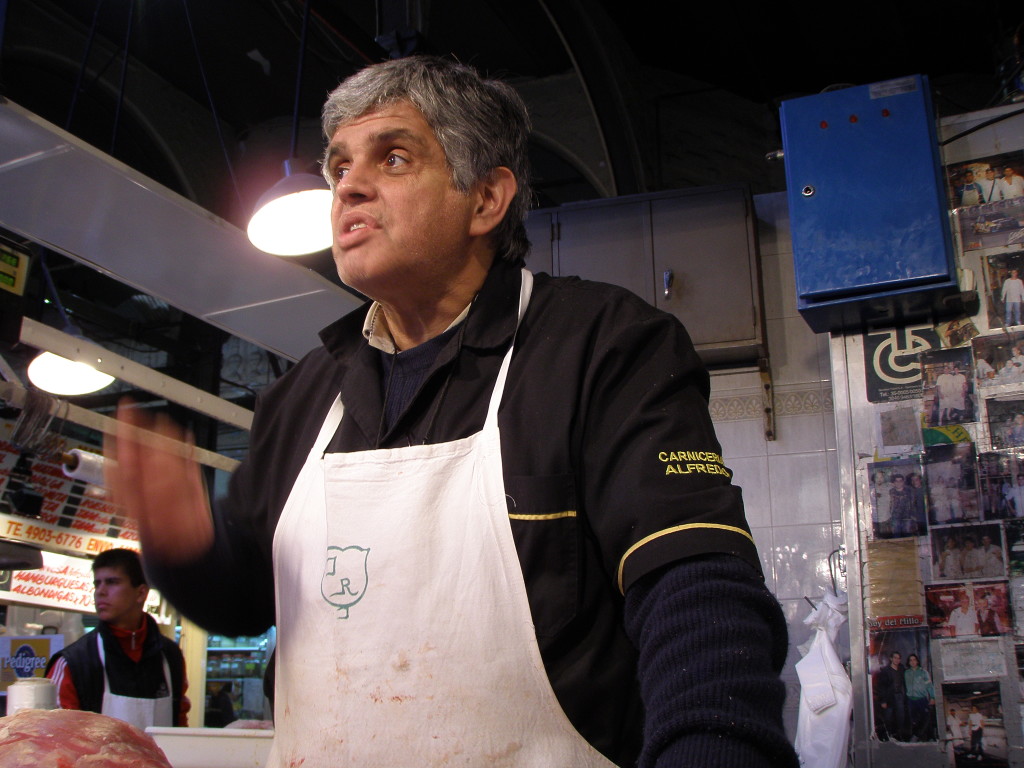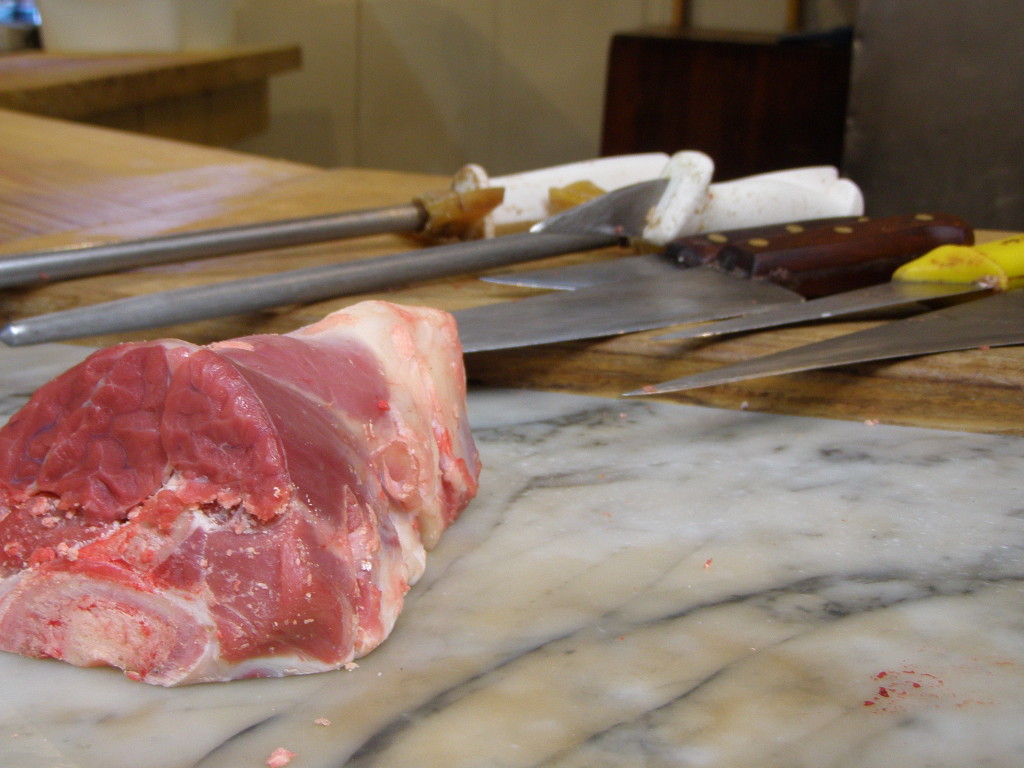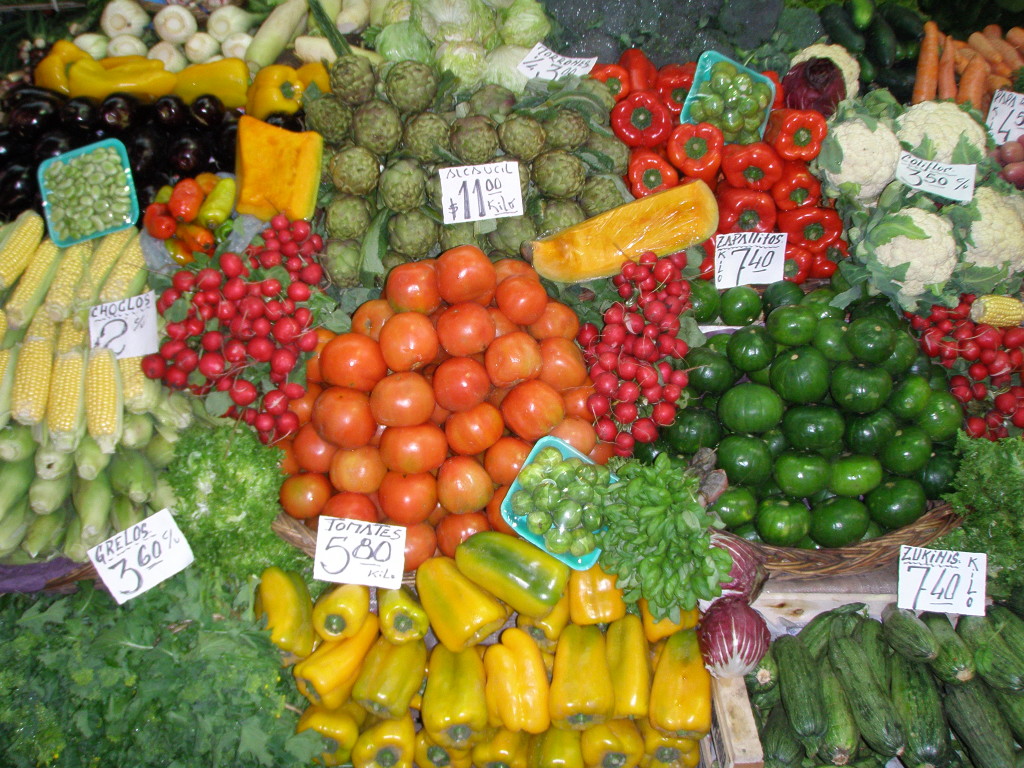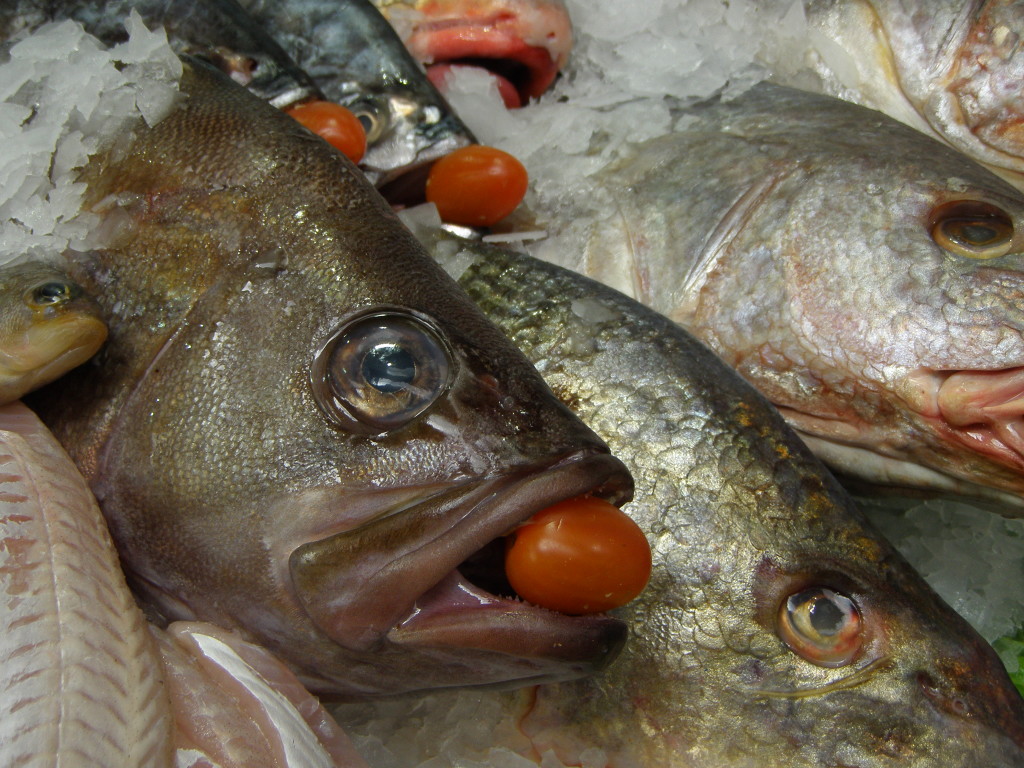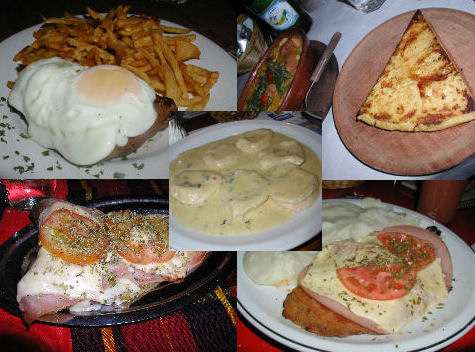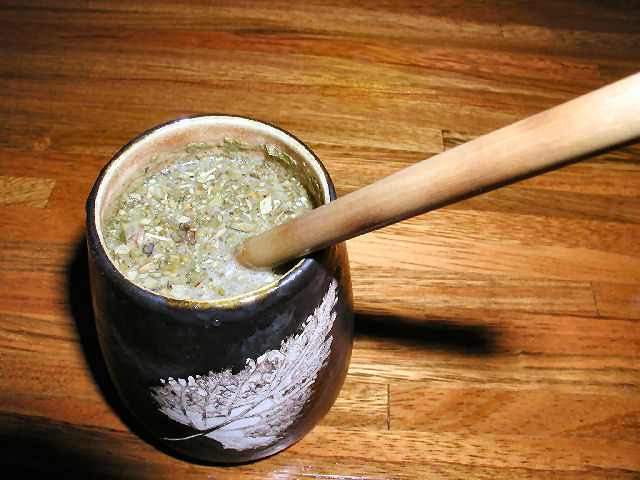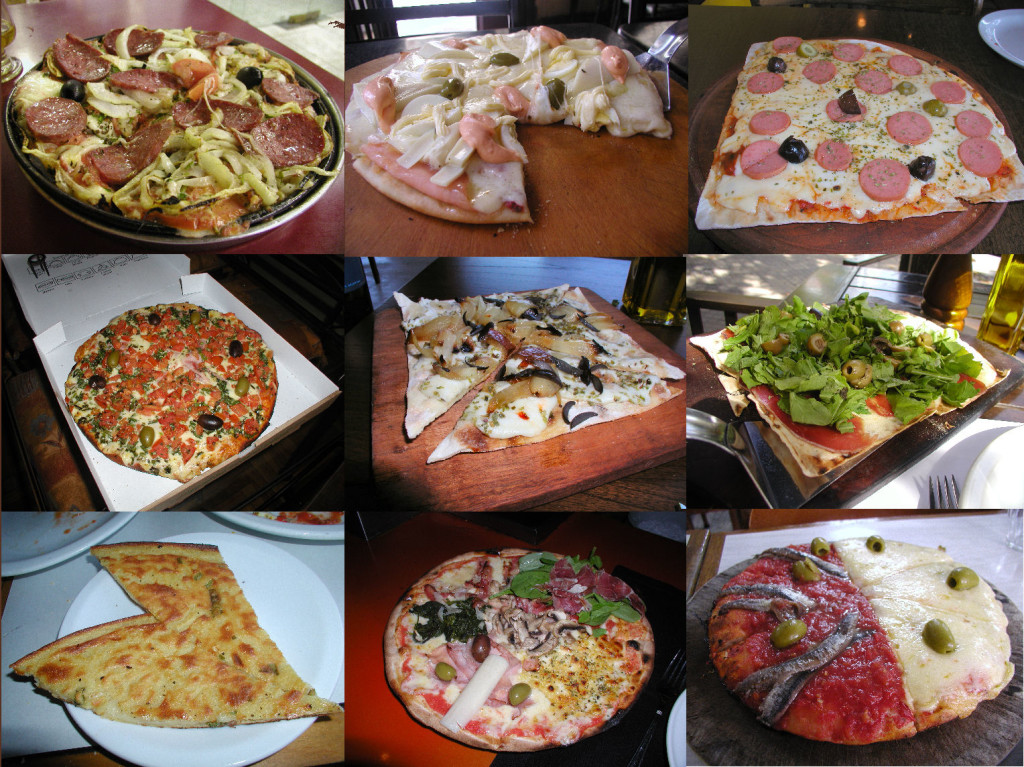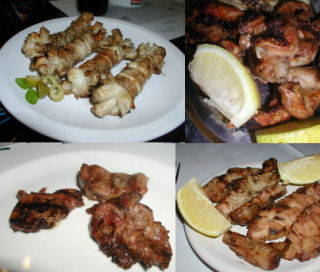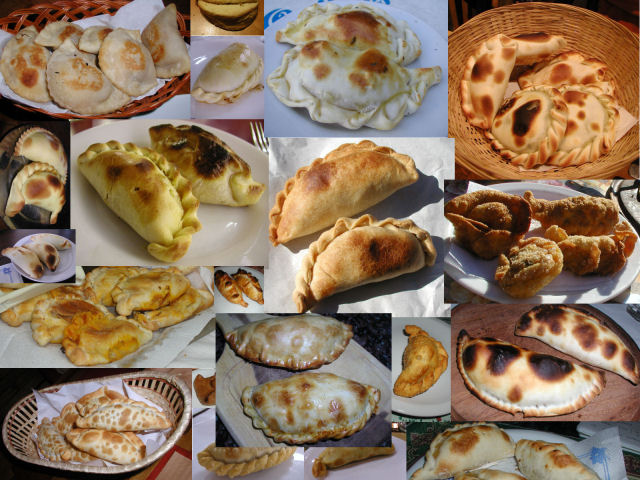The Mixed Grill
NEWS
May 12, 2011
Noel Coward famously said, “Sunburn is very becoming, but only when it is even – one must be careful not to look like a mixed grill.” While we can all understand not wanting to look like one, most of us would be happy to look at one, and then chow down. Here in Buenos Aires, the mixed grill, or parrillada, is everywhere. You can take yourself, your significant other, and all your friends out and dig into a platters of innards and cuts of beef, chicken, pork, and perhaps other meats at any of seemingly thousands of parrillas. We set out to find some different options, hot off the grill.
The Mixed Veg
First to come to mind were vegetables. Sometimes, we’re just starved for the things, and the typical offering of an ensalada mixto with tomato, lettuce and onion, or the steakhouse staple of chard or spinach a la crema, just won’t cut it. We want a selection, and we want it grilled. The hands-down winner we found is the still trendy, modern style Miranda, a parrilla where it’s not just about what you’re eating, but who you’re eating with. For just over 50 pesos they serve up a good sized platter with half a grilled onion, slabs of potato and sweet potato, wedges of butternut squash, slices of zucchini, eggplant and red bell peppers. If we have any objection, it was to the unnecessary fluff of lettuce leaves garnishing the center of the plate. It’s pretty to look at, but it wasn’t grilled. Miranda, corner of Fitz Roy & Costa Rica, Palermo, 4771-4255.
Sometimes we want more surf than turf, and our thoughts turn to fish and shellfish. With the recent departure of our favorite river fish grill, Jangada, we had to start searching anew. Turns out there are a slew of great parrilladas del mar sailing the high seas of Buenos Aires and we’ve only begun to call in at port and check them out. So far, our favorite is Fervor, a pricey, special meal out kind of spot in the heart of old Recoleta. Coming in at over the 200 peso mark (with a half portion reaching 185, pictured), when you consider how pricey seafood tends to be in this city, and that the full portion will easily feed four while the half will, well, feed two, it’s not as hard to swallow. And the food certainly isn’t – two options, either del mar which contains two of the chef’s selections from the fish of the day (rotating between over a dozen options), scallops, calamarette, prawns, and octopus, while the de mariscos offers up more of the same shellfish and leaves aside the fillets. Perfectly cooked, well seasoned, and served up with a trio of housemade dipping sauces and wedges of lemon. Fervor: Brasas del Campo y del Mar, Posadas 1519, 4804-4944.
We know that pizza is nature’s most perfect food, properly encompassing the right balance of whichever set of food groups you choose to subscribe to. Though not as common as it ought to be, one of our favorite porteño contributions to the pizza world are some of the best grilled pizzas we’ve found, anywhere. Hidden away, almost like that slightly “off” aunt that every family has and only trots out at the occasional social gathering, pizza a la parrilla is a gem to behold. And eat. It’s a tough decision as to who offers up the best version, but certainly the easiest to find, and up there in the top couple, would be either branch of Morelia. Cracker thin crust, perfectly charred and delivering up that beautiful smoky grill flavor, and topped with a thin drizzle of olive oil, a whisper of sauce, and your choice of toppings (our favorite is the montecattini with prosciutto, arugula and olives), just barely warmed atop, the pizzas come in 4, 6, or 8 piece sizes (ranging, depending on size and toppings, from roughly 50 to 100 pesos). Morelia, Humboldt 2005 in Palermo, 4772-5979 and Báez 260 in Las Cañitas, 4772-0329, plus one out of town up in La Lucila at Av. Libertador 3499, 4799-7377.
Particularly for those of us from the U.S., there are moments when we miss a good old-fashioned backyard barbecue. Asados just aren’t the same thing. We want meat that’s cooked “low and slow” until it’s so tender it falls off the bone – come to think of it, we want that the meat was cooked on the bone in the first place, it adds flavor! And sometimes, we want barbecue sauce. And what better place to find something of that sort than Bar BQ, where an Argentine owner who spent time in the States licking his fingers in front more wood, charcoal and gas fired grills than you can shake a stick at, brings us his version. And no disappointments were had – with multiple visits under our belts and tasters from Michigan, Colorado, Texas and New York, only the last of those had anything less than glowing reviews, and what do New Yorkers know about barbecue? Hibachis on the fire escape? Beautiful pork baby back ribs or equally shining beef short ribs are lacquered in a tangy sweet sauce with what tastes to us like a tinge of coffee, either running about 70 pesos. The smoky pulled pork sandwich brought tears to our eyes though we did have a debate about pickles on the sandwich (Texas and Michigan vote yes, Colorado and New York vote no), coming in just under 50 pesos. Home sweet home. Bar BQ, El Salvador 5800 in Palermo, 4779-9124.
We can’t totally ignore Argentina’s meat laden famed asado, and there’s no reason we should. One of the things that many of us wish we could do is attend a few more of those backyard family versions, with all the social interactions attendant. And when friends come to visit, it’d be great to not just take them to the same old neighborhood steakhouse or tourist trap version they read about in every guidebook out there. Brand spanking new to the scene is an option to create your own family for the night at the shared table of Adentro Dinner Club. Here, hosts Gabriel and Kelly, respectively Argentine and norteamericana, welcome you to their home in one of the latest of the burgeoning puertas cerradas movement. From mom’s empanada recipe to platters of achurras, the “parts is parts” round, plump prawns, amazing vegetables, and thick, juicy, perfectly cooked slabs of meat, accompanied by wine and followed by exquisite desserts, you get to join a table of strangers, who, by the end of the night will be fast friends. Coming in at 220 pesos a person it seems a bit steep, but it’s all you can eat, and a social experience that can’t be beat. Adentro Dinner Club, in Palermo (address provided with reservation).
Special WUBA guest Dan Perlman opens his home to visitors in one of Buenos Aires’ premier puertas cerradas, Casa Saltshaker.
